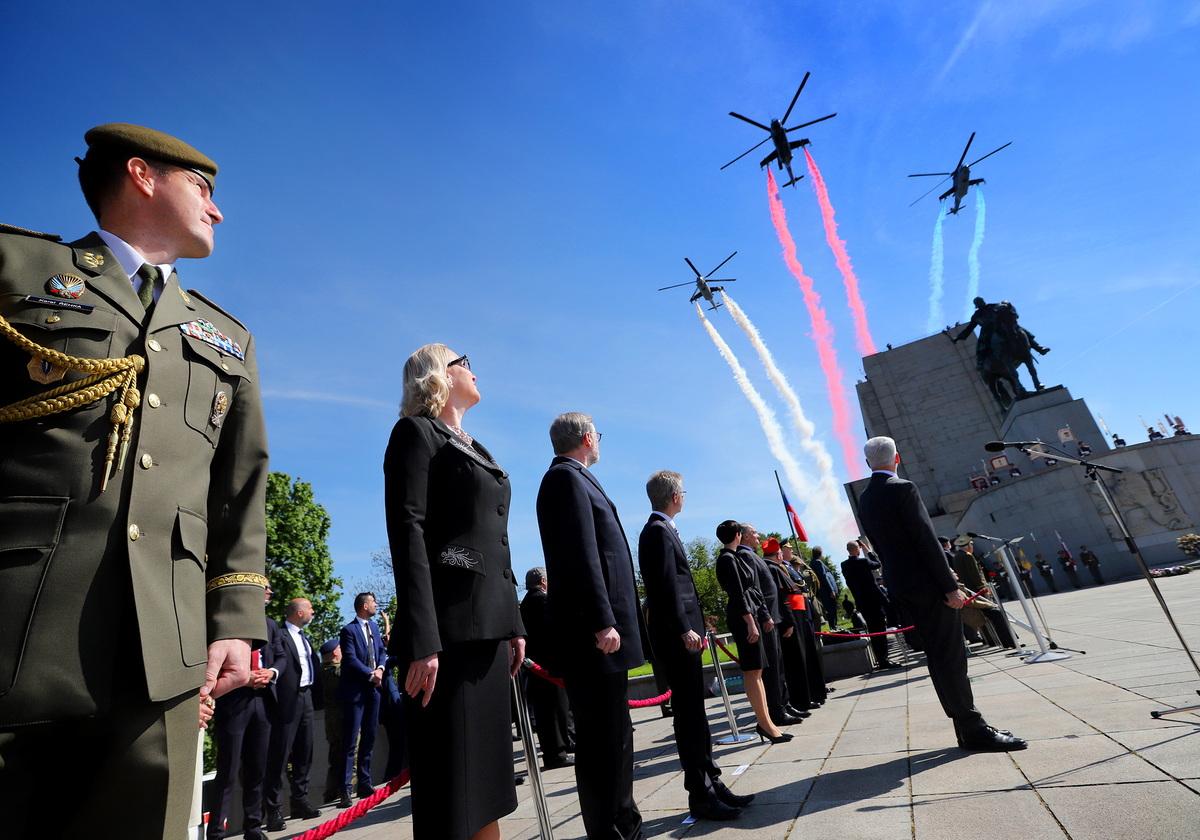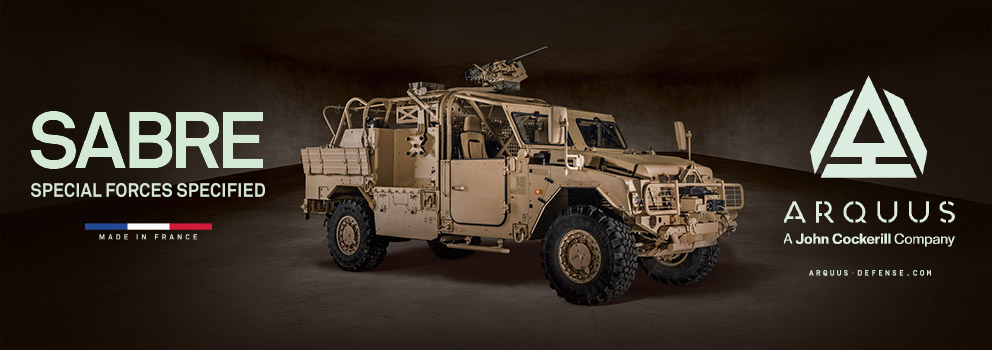Gen. Aleš Knížek: Every screw in the handle of the National Memorial at Vítkov is a national cultural monument of the highest category
The Military History Institute took over the National Memorial at Vítkov, which had been part of the National Museum since 2000. Since June this year, the memorial has been under the Ministry of Defence of the Czech Republic, or more specifically, under the administration of the Military Historical Institute Prague (VHÚ). The legacy of the founders of the Czechoslovak state to build a complex on the top of Vítkov, which now consists not only of the Military Historical Institute and the Army Museum Žižkov but also of the monument itself, is being fulfilled. Less than two years after the reconstruction of the buildings at the foot of the hill and the subsequent opening of the unique, world-class Army Museum exhibition, the VHI team is facing a new task: the sensitive reconstruction and reopening of the Prague landmark, the National Memorial on Vítkov.
Video: Interview with the director of VHÚ Brig. Gen. Aleš Knížek / CZ DEFENCE
Director of the VHÚ, Brig. Gen. Aleš Knížek, whom we interviewed in connection with the future management of the National Memorial at Vítkov, states that this memorial, although previously owned by the National Museum, was already closely connected with the Army Museum Žižkov in the past. "We cooperated with the National Museum, whether it was the care of the Tomb of the Unknown Soldier or the occasional exhibitions that were held at the National Memorial at Vítkov. It has been more than fifteen years since we enriched the National Memorial at Vítkov together with the National Museum through the exhibition Crossroads of Czech Statehood in the Twentieth Century," Aleš Knížek recalls the extensive cooperation.
The process of taking over the memorial itself took about two and a half years, and now the Ministry of Defence is its owner. However, this is not the end of the process. "The final stage will be when the land around the National Memorial at Vítkov, meaning the access roads and the Court of Honour itself, will be under the administration of the Ministry of Defence, or the Military Historical Institute," General Knížek reveals. The access roads and the Court of Honour are still under the administration of Prague City Hall, so the Ministry of Defence, headed by the Chief Director of the Property Section, Marta Kopecká, is taking essential steps to secure these properties as soon as possible. The ownership of these immediate areas around the building is important for the memorial. It is about creating a dignified environment around the memorial and avoiding commercial activities that would devalue the overall mission of this important building. The VHI will, therefore, carefully consider who it allows to lease these sites and for what purposes.
Let us now explore the history of the memorial. In 1920, the first plans were made to build a monument on the memorial hill where the famous Hussite Wars battle took place, which became a symbol of Czechoslovak statehood after the establishment of independent Czechoslovakia. The construction of the monument was inaugurated on 8 November 1928 in the presence of President T. G. Masaryk. While the administrative, archival, and museum parts were completed in 1929, the monument itself was not erected on the top of Vítkov until 1938. However, due to the events surrounding Munich at the time, it was not handed over for its original purpose. During the Second World War, the building was used by the German army as a warehouse.
General Knížek describes the next chapter in the history of the memorial and museum as follows: "Both buildings were connected by an umbilical cord. It can be said that today's Military Historical Institute managed both buildings, and they had one of the most important tasks—to showcase Czechoslovak statehood. This continued until 1953 when the museum building was supposed to become the Institute of Marxism-Leninism, and the National Memorial on Vítkov was slowly but surely transformed into the Mausoleum of Klement Gottwald," the director of the VHÚ explains, calling it a paradox that this transformation never happened. "This was caused by then Minister of National Defence Alexey Čepička, who dismissed Vítkov, but the museum remained a museum. It’s a great paradox. Personally, I am very glad that the Institute of Marxism-Leninism found other premises in Prague and that it was not here at Vítkov, so the continuity of military museology after 1948 somehow continued. Many will remember that the memorial building became a mausoleum during the socialist era. It served as a burial ground for communist presidents, including the mummified remains of Klement Gottwald," says General Aleš Knížek, who also revealed that the Military History Institute plans to preserve the secret laboratory now on display at the memorial in the future. From September this year to the end of next year, a gradual and sensitive reconstruction of the entire memorial is planned, which will culminate, among other things, in the opening of a completely new exhibition.
We were curious if and how the museum and memorial tour system would change. "The system for tours at the Army Museum will not change, but we will offer a supplementary programme connected with the National Memorial at Vítkov. We must say one thing in particular—the exhibition at Vítkov is more than ten years old. We are, therefore, preparing a completely new exhibition, which will be placed in the part below the ceremonial hall—where the permanent exhibition is today. And I don’t think I’m giving anything away by saying that this exhibition will be dedicated to Czech and Czechoslovak statehood and symbols, from the lands of the Czech Crown to the present," reveals General Knížek.
The heart of the memorial is the Tomb of the Unknown Soldier. "It should be said here that the Military History Institute is the institution that has been taking very careful care of the Tomb of the Unknown Soldier for the past fifteen years. Before 2008, the area through which one entered the Tomb of the Unknown Soldier was freely accessible. Later, glass panels were added, and the grave was only accessible on ceremonial occasions," the director of the VHÚ recalls. The Ministry of Defence, through the Military Historical Institute, provided funds for the reconstruction, which was carried out by the National Museum and closed the entrance to the Tomb of the Unknown Soldier. The space was used in a completely different way. It was basically an underpass where "skaters" gathered. The closure allowed for the creation of a new space where the texts of the oath and copies of the battle flags were placed. At the same time, a stele was created with soil from the battlefields of our soldiers, from the First World War to the present day. This section will also undergo a major change. "Anyone wishing to enter will walk past the Tomb of the Unknown Soldier. That's what we've been missing," says General Knížek. Until now, the Tomb of the Unknown Soldier was opened mainly on special days, such as 8 May, 28 October, or Army Day. From September, therefore, there will be a significant change in the entry process.

"Of course, we are also counting on other things that will be connected with the Tomb of the Unknown Soldier. Here again, the Military History Institute will prepare other programs that correspond with this important place in our national history. I assume that one of the pillars of expanding the museum’s offerings will be a programme for schools and students, as this is one of the very important undertakings of the VHÚ," plans Director Knížek.
Expanding education for students and schoolchildren is one of the fundamental and important segments of the Army Museum and Military History Institute’s activities. "In general, the Army Museum in Žižkov has a well-developed educational programme. We have excellent feedback from both primary and secondary schools. The guided tours are also linked to worksheets and history lessons, and all of this will now be connected to the memorial at Vítkov. There may not be as many collection items, but the genius loci of the entire building is absolutely extraordinary. One could say that there is no similar building in Prague or the Czech Republic that showcases Czechoslovak statehood to such an extent, especially in connection with our exhibitions," General Aleš Knížek points out.
We learned that the grave of the Unknown Soldier contains the remains of a soldier who fought in the Battle of Zborov and a soldier killed in the Battle of Dukla. The remains of the Unknown Soldier, who died at Zborov in Ukraine, were exhumed in 2007. We then transported the remains back to the Czech Republic with great difficulty. These are very symbolic actions. Anyone who steps up to the Tomb of the Unknown Soldier will be paying respect to those who gave their lives for this country. After all, not only the names of soldiers from World War I and World War II will be placed there, but also the names of soldiers of the current Czech Army who gave their lives in foreign operations," says the director of the VHÚ.
The military historian Aleš Knížek also reminded us of all the periods inscribed on the walls of the memorial. "We can mention the first half of the twentieth century, from the establishment of the Republic, through the First Republic, the period of occupation, when the memorial did not fulfill its function and served as a warehouse for uniforms of the German armed forces. We can continue with the period after World War II. Let us recall that the Tomb of the Unknown Soldier was not originally planned for Vítkov. It was in the Old Town Hall and was liquidated by the Germans in 1942. In 1949, the grave was moved to Vítkov, and the remains of the Unknown Soldier from Dukla were placed there, followed years later by the remains of the soldier from Zborov. All of this is intertwined, and the memorial has remained, so to speak, untouched," General Knížek explains.
"And then, fortunately, came the huge reconstruction, which the National Museum financed together with the Ministry of Culture, allowing the National Memorial to breathe and start creating interesting programs," Knížek recalls, adding a surprising detail. "The Vítkov Memorial has an organ made specifically for these spaces. I would love to get this organ up and running and prepare some organ concerts. These are the surprises that are always present. In truth, every screw in the handle of the National Memorial at Vítkov is a national cultural monument of the highest category, and we must treat it with respect," adds the director of the VHÚ.

In the Army Museum in Žižkov, you will find many unique exhibits, most of which can be touched by any visitor. However, the exhibition in the memorial will be a little different. "It will be dedicated to Czech statehood, and there isn’t as much room for touching. We have to remember that it will be difficult to make copies because even the items that can be touched here are not originals. Of course, they are all copies. And if we are talking about things from, say, the ninth, tenth, eleventh, or twelfth century, we probably won’t make copies of those at all. I’m not sure that would even make sense," explains Aleš Knížek. An exception will be the program of tours for blind visitors. "There, the question is whether we might not have a tile from Zion Castle, for example, made into a copy so that we can show it during the tactile tour. There will be many textiles. The Military Historical Institute is the guardian of the state symbols of this country, so we are preserving a huge number of monuments from the period of the creation of Czechoslovak state symbols. And there are mainly textiles, whether it’s flags, uniforms, or things directly related to something created before the republic even existed. For example, the first designs were created and then brought to life," says Aleš Knížek.
The Žižkov Army Museum is one of the most visited museums, not only by citizens of the Czech Republic but also by many foreigners from different parts of the world. This is evidenced not only by the visitors' book but also by ratings and reviews on social networks. "It’s incredible where people come from to visit our museum, and sometimes it’s very surprising. I’m amazed by the overwhelming interest from South America. For example, people come from Brazil, Ecuador, or Chile. They tell us: ‘We visit Vienna, Prague, and Budapest based on reviews on Tripadvisor and Google Maps.’ That’s how we know this is a very special museum that is highly rated around the world. That helps us a lot," adds Director Knížek. According to him, it is also important for foreign visitors that they evaluate the museum as a whole because they perceive the military history of the Czech Crown, Czechoslovakia, and the Czech Republic in a different, more global way. It’s clear that they are very satisfied and enthusiastic. "It turned out that the concept of the exhibitions is correct. The people working at the Military History Institute are passionate about military history and knowledgeable in the field. That’s why the exposition is such a success," concludes the director of the Military History Institute, Brig. Gen. Aleš Knížek. If you are interested in the whole interview, watch the video at the beginning of the article.





















